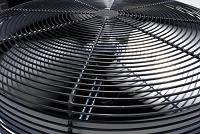
When sized and installed correctly, your A/C replacement will operate to peak capacity, driving return on investment. Here’s how to proceed.
Selection
Your budget will essentially dictate the type of system you can select; however, it generally pays to invest in a system with as high a SEER rating as possible.
- While federal minimum standards for A/C efficiency rests at SEER 13, high-efficiency systems will net you much higher monthly energy savings. These systems start at SEER 16.
- High-efficiency systems employ features that greatly advance comfort and savings. They use components that run continuously, instead of repeatedly starting and stopping, which wears out the components more quickly. Therefore, the components will last longer, extending the system’s useful service life.
- Tax credits are available for high-efficiency systems. You can get a credit of $300 on your next tax return for making the purchase.
Sizing and installation
Even with the highest efficiency system installed in your home, you won’t get the expected results from the A/C if the unit isn’t sized and installed correctly. Your HVAC contractor should:
- Calculate the home’s cooling load using a method called Manual J, developed by the Air Conditioning Contractors of America (ACCA). This method takes into account the home’s insulation, air sealing, window efficiency and more.
- The contractor will then use the Manual S method to size the capacity of the air conditioner to meet the home’s load.
Once the selection process is complete, the contractor will begin to install the unit by:
- Locating the outdoor condenser away from direct sunlight and winds
- Measuring airflow
- Checking the refrigerant charge
- Testing the ductwork system
- Ensuring that the indoor and outdoor units are properly matched (in cases where a furnace is involved)
If you’re facing an A/C replacement and would like expert assistance, contact Rodenhiser Plumbing, Heating & Air Conditioning today. We serve homeowners along the Route 495/128 area of Norfolk MA.
Our goal is to help educate our customers about energy and home comfort issues (specific to HVAC systems). For more information about air conditioners and other HVAC topics, download our free Home Comfort Solutions Guide.
Image via Shutterstock.com